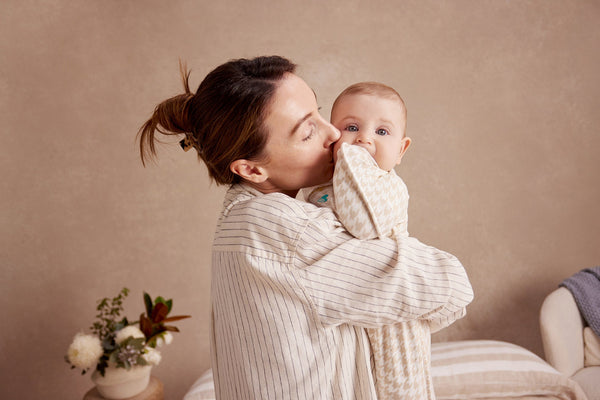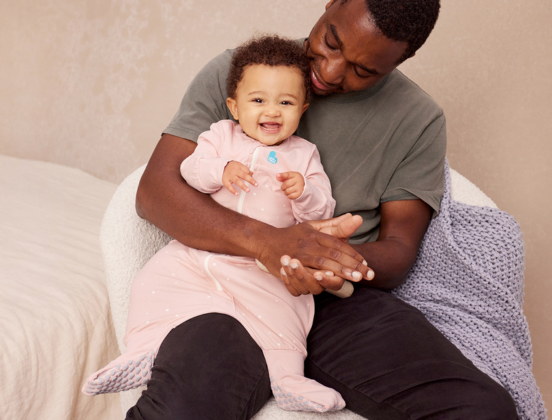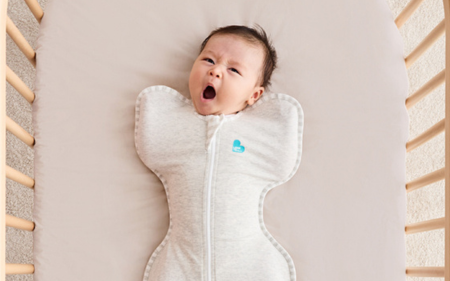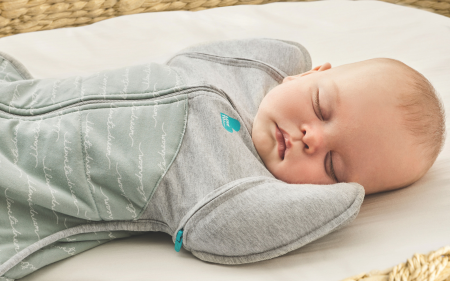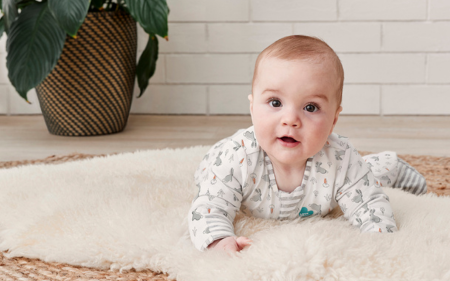Safe Sleep For Newborns
It goes without saying that keeping our babies safe is what is on most of our minds 24/7. Sleep in particular is one of those topics that is constantly evolving as more research is conducted so you are not alone if you’ve wondered if it's safe to put your baby to sleep on their side or if this can increase the risk of sudden infant death syndrome (SIDS). One of the key safe sleep recommendations when putting babies to sleep is to place the baby on their back from birth to sleep, to reduce the risk of SIDS and aim to prevent fatal sleeping accidents. This recommendation endorsed by the AAP has largely contributed to a significant decline in SIDS rates since the now called Safe to Sleep campaign began.
Why Side-Sleeping Can Be Risky for Newborns
If a baby sleeps on their side it can look super cute and comfy but unfortunately, once a baby rolls on their tummy, they are no longer in a safe sleep position. By rolling onto their tummy, they can compromise their airway and as their responsive reflexes are still developing, it can be difficult for them to respond to the roll safely by lifting their head or swallowing. By placing them on their back for all naps and nighttime sleep, you are providing the baby the safest sleep position to allow for clear airway protection.
Increased risk of SIDs
Side-sleeping can increase the risk of SIDS and SUDI and once a baby rolls onto their stomach, they are potentially now blocking their airways. With developing neck and head control, they may then struggle to reposition themselves safely so placing a baby on their back to sleep is always recommended. Sleeping on their back is also a safe choice as it helps keep the airway above the esophagus, making swallowing easier which is an important reflex that helps protect their breathing.
When Is It Acceptable For Babies Sleeping On Their Side?
Like all things baby, there may be circumstances where side-sleeping is required under medical supervision or as advised from a pediatrician. Always consult a trusted health professional if you have questions relating to your child and situation.
It’s recommended to always place your baby on their back for sleep, at least for their first year of life. However, as they grow in strength and skills, once they master the art of rolling and can confidently roll onto their side, front to back and back again, it's usually a sign it's safe to let them fall asleep in the position they find the most comfortable. Until they can roll consistently though, it’s best to remain cautious and encourage them onto the back for sleep. When babies start showing signs of rolling, make sure you help them on their way and progress from sweet swaddler to arms out transitioner!
Learn More: How to Transition from Swaddling to Arms-Free sleep in 3 Easy Steps
Tips For Safe Sleeping Practices
Here are our 5 top tips for safe sleep:
- Always place baby on their back for sleep
- Keep baby’s head, face and airways clear
- Keep baby’s space smoke free
- Same for day, same for night. Same safety rules apply for naps and nighttime
- Sleep baby in their own safe sleep space in the parent or caregiver’s room for the first 6 months
Learn More: Safe Sleep Guidelines for Newborn Babies
When To Seek Professional Advice
Sometimes the simplest of things can still feel overwhelming or not address your individual circumstance. If you need help, reach out to a trusted medical professional for tailored advice.

